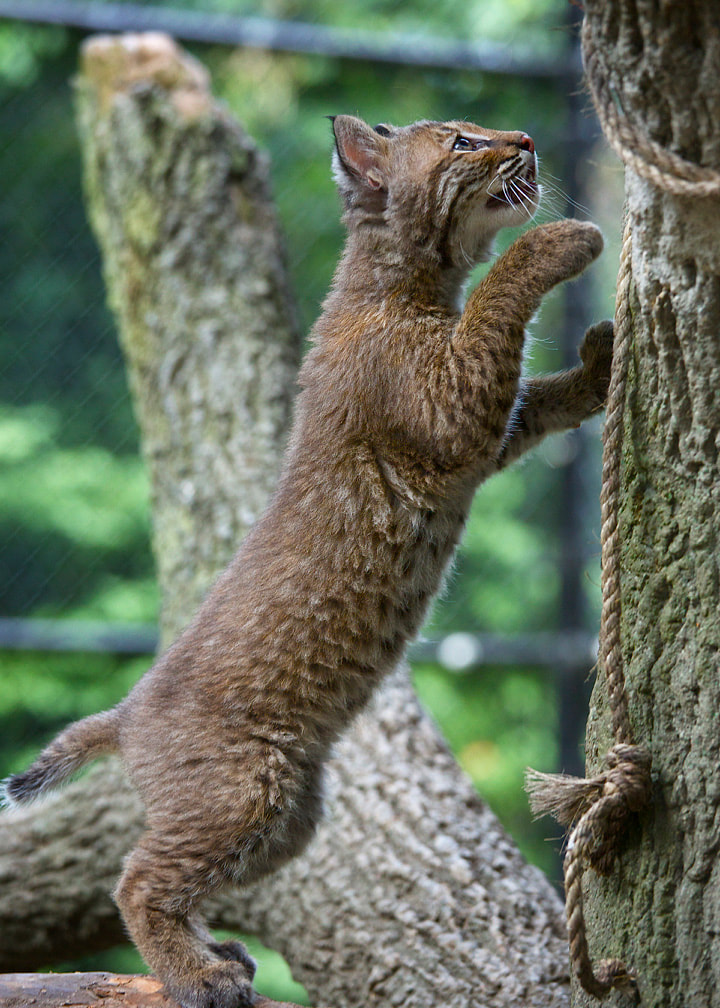Bobcat (Lynx rufus)
|
Physical Description: The most common wildcat in North America, the bobcat is named for its short, bobbed tail. Their coats vary in color from shades of beige to brown fur with spotted or lined markings in dark brown or black. They grow 17-23 inches tall, 25-42 inches long and can weigh up to 28 lbs.
Habitat: They live in varied habitats from forests and mountainous areas to semi-deserts and brush land. They prefer a habitat with ample brush to hide in and prey. Solitary and territorial animals, females never share territory with each other while male territories tend to overlap. Territories are established with scent markings and sizes are extremely varied – generally 25-30 sq. miles for males and about 5 sq. miles for females. Range: They can be found across North America, from Mexico to Canada, with only small areas in the United States Midwest region excluded. Diet: Bobcats are excellent hunters, stalking prey with stealth and patience, then capturing their meals with one great leap. Lifespan: They live 12-13 years in the wild and up to 25 in human care. Social Structure: They are relatively solitary creatures. Mating season is typically in the late winter; however, it can occur throughout the year. The gestation period is 50-70 days with kittens born around early spring. Mothers will give birth to 1-6 kittens who they provide care to for up to 11 months before they must leave their mother’s territory. Kittens will start to eat solid food at 2 months and hunt at 5 months. Status: Least Concern1 Other: Connecticut’s Beardsley Zoo is home to one Bobcat who came to them as a rescue from DEEP at a few weeks old. They are not on display to the public and are used in a limited capacity for digital programs. 1 https://www.iucnredlist.org/species/12521/50655874 |









